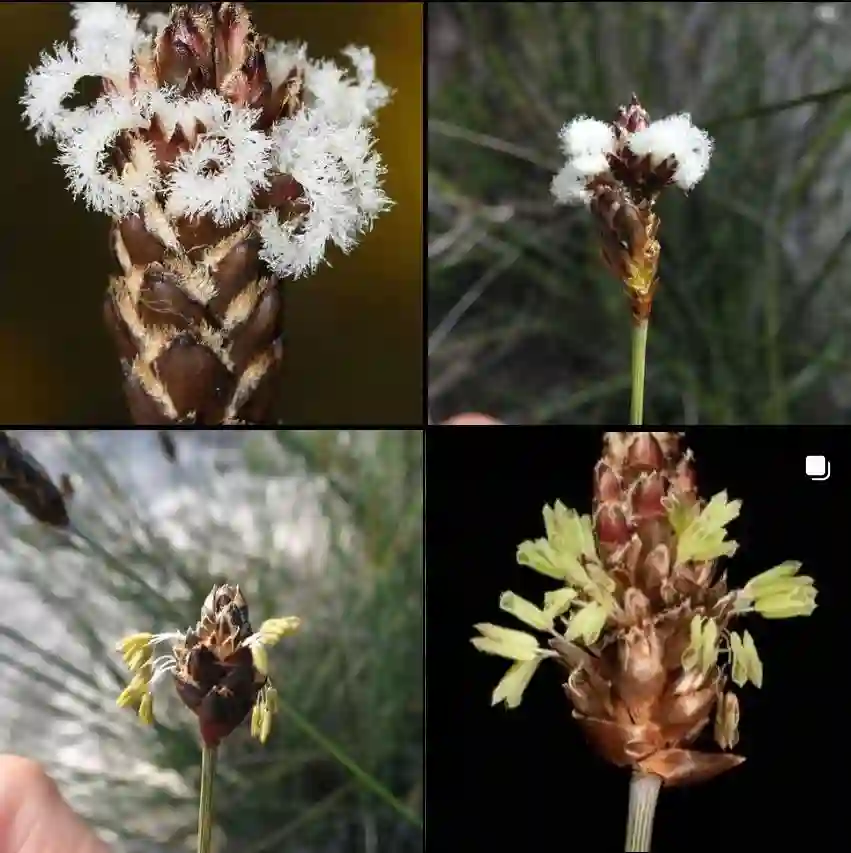Exploring the Calycanthaceae Family: A Personal Journey
The Calycanthaceae family, often referred to as the “sweetshrub family,” has always captivated me with its unique combination of beauty, fragrance, and botanical intrigue. It’s a relatively small plant family with only three recognized genera—Calycanthus, Chimonanthus, and Idiospermum—but each offers something special. In this article, I’ll take you through my personal experiences and thoughts on these fascinating genera.
Calycanthus: The Sweetshrub That Stands Out
4 Species in Genus Calycanthus
Whenever I think of the Calycanthaceae family, the Calycanthus genus immediately comes to mind. Commonly called sweetshrub or Carolina allspice, this plant is native to North America. The rich, spicy fragrance of its blooms is unforgettable. In my garden, I’ve found Calycanthus floridus to be a standout species. The maroon-brown flowers emit a captivating scent that’s reminiscent of a mix between pineapple, strawberries, and spices.
I’ve noticed that Calycanthus shrubs are highly adaptable. They thrive in a range of conditions, from full sun to partial shade, and seem to handle a variety of soil types. Personally, I’ve found that they perform best when planted in rich, well-drained soil with plenty of organic matter. They also benefit from regular pruning to keep them in shape and encourage healthier growth.
Beyond their aromatic flowers, the shrubs boast shiny, dark-green leaves that turn a vibrant yellow in the fall. The foliage offers year-round interest, and I often use Calycanthus as a feature shrub in mixed borders. The flowers not only smell wonderful, but they also attract pollinators, making them a valuable addition to any wildlife-friendly garden.
Chimonanthus: Winter’s Fragrant Delight
The next genus in the Calycanthaceae family is Chimonanthus, best known for the wintersweet (Chimonanthus praecox). This plant holds a special place in my garden, mainly because it provides a delightful burst of fragrance during the colder months when most other plants are dormant. There’s nothing quite like stepping outside on a chilly day and catching the sweet, almost honey-like scent of Chimonanthus blooms.
What makes wintersweet stand out to me is not just its fragrance but also its resilience. I’ve found that it’s hardy in a wide range of temperatures, and while it prefers full sun, it will tolerate some shade. One thing to note is that wintersweet can take a few years to bloom after planting, which requires patience. However, when those pale yellow, waxy flowers appear, it’s absolutely worth the wait. The best part is that the blooms emerge directly on the bare branches, creating an ethereal look that I often find mesmerizing in the winter garden.
Idiospermum: A Botanical Rarity
The third genus in the Calycanthaceae family is Idiospermum, a plant that, while rare, is incredibly fascinating from a botanical perspective. Native to the rainforests of Queensland, Australia, Idiospermum australiense—or the Idiospermum—is one of the world’s most primitive flowering plants.
My encounter with Idiospermum is purely academic, as I haven’t had the chance to grow it myself due to its specific tropical requirements. However, I find it remarkable how this plant has survived since the time of the dinosaurs, making it a living fossil of sorts. It’s a large, evergreen tree, and its seeds are toxic, which is another fascinating adaptation in its native habitat.
From a botanical standpoint, Idiospermum is essential for understanding the evolution of flowering plants. While it’s unlikely that most gardeners will encounter or cultivate this plant, it’s worth appreciating the evolutionary significance of this genus within the Calycanthaceae family.
Growing Tips for Calycanthaceae Family Plants
From my experience with the Calycanthaceae family, particularly Calycanthus and Chimonanthus, I’ve learned a few valuable growing tips that can help ensure success in your garden:
- Soil and Light: These plants are adaptable but prefer well-draining soil. Both Calycanthus and Chimonanthus thrive in full sun to partial shade. In my garden, I’ve found that full sun encourages more prolific blooming.
- Watering: Once established, these plants are relatively drought-tolerant, but they perform best with consistent moisture, especially during the growing season.
- Pruning: Pruning is key to maintaining the shape and health of these shrubs. I recommend pruning after flowering to keep the plants compact and encourage future blooms.
- Patience: Wintersweet can take a few years to establish and bloom, but the reward is worth the wait.
- Pollinator-Friendly: Both Calycanthus and Chimonanthus attract pollinators. I’ve noticed bees and even butterflies frequenting the flowers, which is always a plus for any garden ecosystem.
Why the Calycanthaceae Family Deserves Attention
The Calycanthaceae family may not be as large or as well-known as other plant families, but I believe it deserves more recognition in the gardening world. Whether you’re drawn to the aromatic flowers of Calycanthus, the winter blooms of Chimonanthus, or the botanical curiosity of Idiospermum, this family has something for every gardener. Personally, I’ve found these plants to be reliable, low-maintenance additions to my garden, with the added bonus of fragrance and beauty.
In conclusion, the Calycanthaceae family offers a unique combination of aesthetics and hardiness, making it an excellent choice for a variety of garden settings. Whether you’re looking to attract pollinators, enjoy winter blooms, or simply add a touch of botanical history to your garden, these plants have you covered.
If i die, water my plants!



